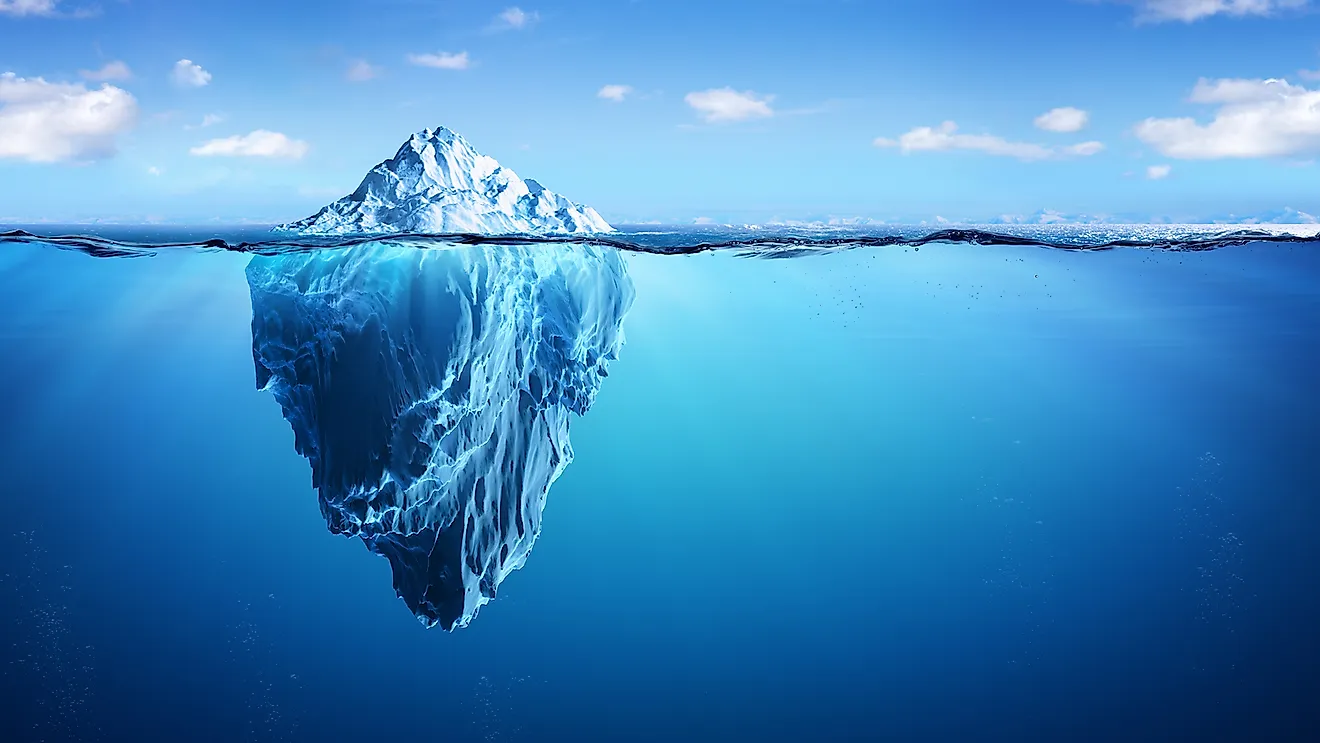Why Are Icebergs Dangerous?

Icebergs are large pieces of freshwater ice that have broken off glaciers or ice shelves and float in open water. Icebergs can exist in various sizes and shapes, but the term iceberg typically refers to a block of ice that is more than 15 ft across. Smaller icebergs that are between 6.6 ft and 15 ft across are referred to as bergy bits, while those less than 6.6 ft across are called growlers. About 90% of an iceberg exists below the surface of the water surface, and therefore the phrase "tip of the iceberg" refers to the small part of the iceberg that is visible. The visible portion of the iceberg ranges in size from 3 ft to 200 ft and can weigh as much as 200,000 metric tons. The biggest iceberg ever recorded was discovered in 1958 in the North Atlantic, and its tip reached a height of 551 ft above the surface of the water.
Shapes And Colors Of Icebergs
An iceberg is usually white in color since it is covered by snow, but it can also be black, yellow, blue or green. These variations in color can be impacted by factors such as the presence of algae, absence of air bubbles, and the seawater composition. Icebergs are also grouped according to their shape. There are two basic kinds of iceberg forms: tabular and non-tabular. Tabular icebergs have a flat top and steep sides. They are usually very large in size and are sometimes referred to as ice islands. Non-tabular icebergs can take different shapes, including wedge, blocky, pinnacle (icebergs with spires), and dome.
The Largest Icebergs Recorded
The biggest icebergs in the world broke off or were "calved" from the Ross Ice Shelf in Antarctica. The largest iceberg ever recorded was spotted in the South Pacific Ocean in 1956 by the USS Glacier, about 150 miles from Scott Island. The Antarctic-tabular iceberg had an area of about 12,000 sq miles and measured approximately 208 miles long and 60 miles wide. Iceberg B-15 is also among the largest icebergs ever recorded, which was observed in 2000 and had area of roughly 4,200 sq mi.
Why Are Iceberges Dangerous
Icebergs can be very dangerous to ships, given they are massive but are difficult to detect. Only 10% of an iceberg is usually visible, which makes it challenging to determine its exact size. Historically, icebergs have caused numerous nautical accidents, the most of famous of which was the sinking of the Titanic in April 1912, resulting in 1,518 deaths. Other ships sunk by icebergs include the Le Raymound in 1923 and the Hans Hedtoft, which sunk after hitting an iceberg in 1959 and caused 95 deaths. Icebergs can also sometimes flip when they melt and begin to break apart, and when this occurs, the energy they give off can cause tsunamis and even earthquakes.
Monitoring Icebergs
Before the sinking of the Titanic in 1912, there was no system for tracking icebergs in open water. However, soon after its sinking, the US Navy began patrolling open waters and monitoring icebergs. The International Ice Patrol (IIP) was formed in 1914, with the goal of collecting data on salinity levels, ocean temperature, ice-flow, and measuring currents. Currently, icebergs are monitored globally by the US National Ice Center (NIC), which was formed in 1995, and produces forecasts and analyses of ice conditions in the Arctic, Antarctic, Chesapeake Bay, and Great Lakes.











